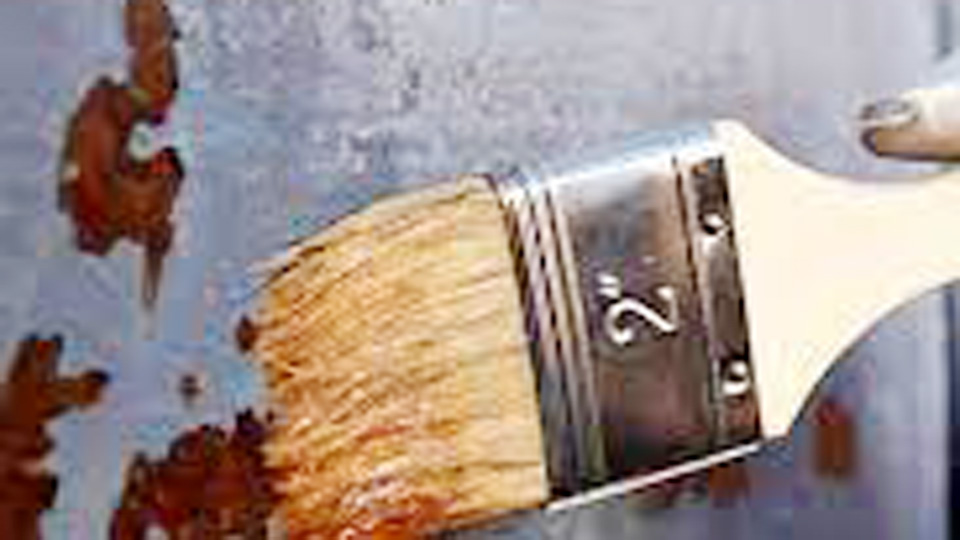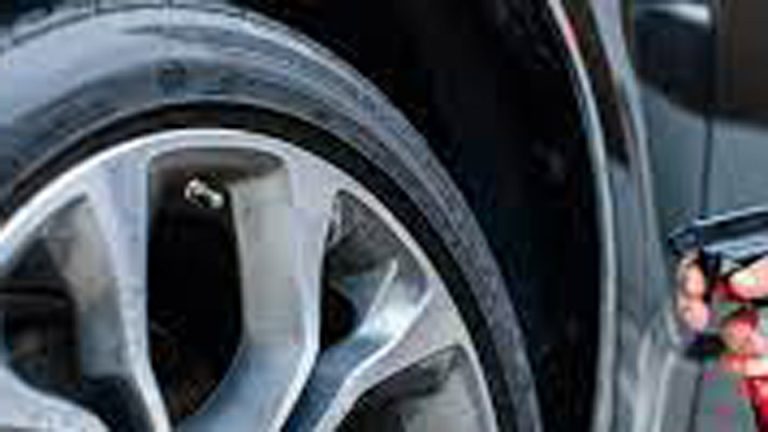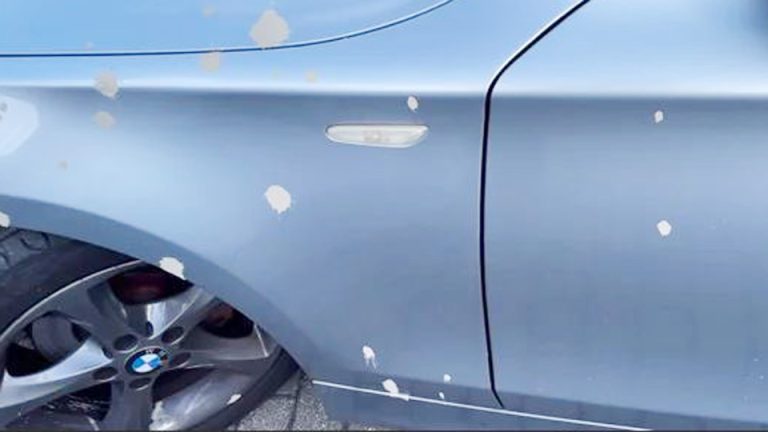Rust on white painted metal is one of those things that sticks out like a sore thumb. Whether it’s on your car’s body, garage door, or even outdoor furniture, that reddish-brown spot against the clean white paint can be frustrating. I’ve dealt with this issue countless times in my garage and around the house, and the good news is—it’s fixable if you tackle it the right way. When people ask me “How to Remove Rust from White Painted Metal?”, I always explain that the trick is removing the rust without damaging the surrounding paint. Go at it too aggressively, and you’ll strip the finish; go too soft, and the rust will creep back.
Over the years, I’ve found a few reliable methods, from simple household fixes like baking soda or vinegar to more heavy-duty approaches with sandpaper and rust converters. The key is knowing how deep the rust has gone—surface rust is easy to handle, but if it’s eaten through the metal, you may need a patch or repaint. In this guide, I’ll share step-by-step ways to safely clean up rust on white painted metal, protect it from coming back, and keep your surfaces looking sharp for the long haul.

Image by pureblast.co.uk
Understanding Rust on Car Body Panels
Rust, or iron oxide, forms when metal meets moisture and oxygen. On cars, it’s common on body panels like doors, fenders, and hoods—those are the “spare parts” we’re talking about here, as they’re often replaced when rust gets bad. These panels shield the vehicle’s frame and internals while contributing to its aerodynamics.
In my shop days, I’d explain to customers that white painted metal is particularly vulnerable because light colors highlight discoloration early, but the paint itself acts as a barrier. What the panel does is simple: it provides structural support, protects against elements, and keeps your car looking sharp.
Common Signs of Rust Damage on Painted Cars
Spotting rust early is key. Look for bubbling or blistering under the paint—that’s a classic sign the metal beneath is oxidizing. On white cars, you might see tiny orange specks or streaks, especially around wheel wells or door edges where road salt accumulates.
Other indicators include flaking paint, rough textures when you run your hand over the surface, or even small pits in the metal. I’ve had customers bring in vehicles where what started as a dime-sized bubble turned into a fist-sized hole because they ignored it. If you notice a musty smell inside the car or water leaks, rust might have perforated a panel.
Peeling paint is another red flag; it exposes bare metal to more moisture, accelerating the process. In severe cases, you’ll see actual rust holes, which mean the panel’s integrity is shot.
When and Why You Need to Address Rust on Body Panels
Replacement or repair becomes necessary when rust compromises safety or spreads uncontrollably. If it’s surface rust— just light spotting on the paint— you can often remove it without replacing the panel. But if it’s penetrated deep, causing holes or weakening the structure, it’s time for a new part.
Why replace? Safety first: Rusted panels can fail in accidents, reducing crash protection. Performance-wise, holes let in water, leading to electrical issues or reduced fuel efficiency from added weight of repairs. Cost-wise, early intervention is cheap; I’ve fixed rust spots for under $50 in materials, versus $500+ for a new fender.
In the US, where winters bring salt in states like Michigan or New York, rust is a reliability killer. I’ve seen salt belt cars where ignored rust led to total frame failure—not worth the risk.
Choosing Between Repairing and Replacing Rusted Body Panels
Deciding to repair or replace? If the rust is superficial, repair it. For deeper damage, replacement ensures longevity.
Body panels are spare parts available as OEM (original equipment manufacturer) or aftermarket. OEM comes from the car’s maker, like Ford or Toyota, ensuring perfect fit and warranty compatibility. Aftermarket are third-party, often cheaper but varying in quality.
In my experience, for rust repair, if the panel’s mostly intact, grind out the rust, prime, and repaint. But if it’s Swiss cheese, swap it out to avoid future headaches.
OEM vs Aftermarket Body Panels: Which to Choose for Rust Repair
When replacement is needed, weigh OEM against aftermarket.
OEM panels match your car’s specs exactly, with better rust resistance from factory coatings. They’re pricier— a Honda Civic fender might run $300 OEM versus $150 aftermarket—but they fit without adjustments and hold value better.
Aftermarket options, from brands like Sherman or Goodmark, are budget-friendly and widely available at places like AutoZone or RockAuto. They might require tweaks for fitment, and some rust faster if the metal’s thinner.
Here’s a quick comparison table based on what I’ve seen in real repairs:
| Aspect | OEM Panels | Aftermarket Panels |
|---|---|---|
| Fitment | Perfect, no modifications needed | May need trimming or adjustments |
| Quality | High-grade steel, better coatings | Varies; some equal OEM, others thinner |
| Price (e.g., Ford F-150 fender) | $250–$400 | $100–$250 |
| Rust Resistance | Excellent, factory-treated | Good if galvanized; check reviews |
| Availability | Dealer or online, sometimes backordered | Readily available at parts stores |
| Warranty | Often matches vehicle warranty | 1–5 years, depending on brand |
Pros of OEM: Superior durability, peace of mind. Cons: Costlier, harder to find for older models.
Pros of aftermarket: Affordable, quick shipping. Cons: Potential fit issues, faster corrosion if cheap.
I’ve installed both; on a ’15 Chevy Silverado with rocker panel rust, aftermarket saved the owner $200, but we had to weld extra for fit. Stick with certified aftermarket (CAPA-rated) to avoid fakes.
Identifying Genuine vs Fake Body Panels
Fake parts flood the market, especially online. Genuine OEM has manufacturer stamps, holograms, or serial numbers—check against your VIN.
For aftermarket, buy from reputable US sellers like O’Reilly or NAPA. Fakes often have poor welds or thin metal that rusts quick. I’ve spotted counterfeits by weight; real panels feel substantial.
Tip: Scan QR codes if available, or compare to dealer photos.
Step-by-Step Guide: How to Remove Rust from White Painted Metal
Alright, let’s get hands-on. I’ve done this dozens of times on white cars where stains pop. Safety first: Wear gloves, goggles, and a mask—rust particles fly.
Preparing Your Workspace and Tools
Set up in a well-ventilated garage. Tools you’ll need: wire brush, sandpaper (80–400 grit), angle grinder with wire wheel for bigger jobs, rust remover chemical, primer, touch-up paint (match your white shade), rags, and masking tape.
For US availability, grab these at Home Depot or Advance Auto Parts. Budget: $50–100 for basics.
Common mistake: Skipping prep. Clean the area with soap and water first to remove dirt.
Mechanical Rust Removal Methods
For light rust, start mechanical. Use a wire brush to scrub off loose flakes. Then, sand with coarse grit to bare metal, feathering edges to blend.
On white paint, be gentle—aggressive sanding scratches the surrounding area. I’ve used a Dremel for precision on spots.
Pros: Cheap, no chemicals. Cons: Labor-intensive, risks paint damage if overdone.
For deeper rust, an angle grinder with a stripping disc works wonders. I once cleared a hood on a white Toyota Camry in under an hour this way.
Chemical Rust Removal Options
Chemicals dissolve rust without scraping. Best for painted surfaces to avoid abrasion.
Top picks: Evapo-Rust for soaking parts—non-toxic, reusable. WD-40 Specialist Rust Remover Soak for quick dips. Iron-X or CLR for spray-on; they turn purple on contact with iron particles.
On white metal, test in a hidden spot—some can discolor if left too long.
Table of best rust removers I’ve used:
| Product | Type | Pros | Cons | Price (US, 32oz) | Best For |
|---|---|---|---|---|---|
| Evapo-Rust | Gel/Liquid | Safe on paint, no scrubbing | Slower on heavy rust | $20–$30 | Soaking panels |
| WD-40 Rust Soak | Liquid | Fast-acting, widely available | Fumes, not eco-friendly | $15–$25 | Tools and small spots |
| CLR | Spray | Tackles calcium too | Can etch if overused | $10–$20 | Painted surfaces |
| Naval Jelly | Gel | Thick, stays on vertical surfaces | Acidic, needs neutralization | $15–$25 | Body panels |
| Iron-X | Spray | Color-changing indicator | Pricey | $25–$40 | White cars (shows spots clearly) |
Pros of chemicals: Effective on embedded rust. Cons: Messy, potential skin irritation.
Apply, wait 5–30 minutes, rinse. Neutralize with baking soda water to stop acid action—a step I always stress after a buddy’s paint bubbled from residue.
Installation Tips for Replacement Panels if Needed
If repairing isn’t enough, replace. Remove old panel by drilling rivets or unbolting. Align new one, weld or use adhesive for no-weld fixes.
Maintenance: After removal, prime bare metal immediately—use rust-inhibiting primer like POR-15. Touch up with white automotive paint; layer thin coats.
Common mistakes: Not priming soon enough—rust reforms overnight. Or mismatched paint; get OEM-matched from dealerships.
Safety: Disconnect battery if near electronics, use jack stands for underbody work.
Personal Anecdotes from the Garage
Back in my mechanic days in Texas, a customer rolled in with a white Ford Explorer riddled with rust from coastal drives. We started with Iron-X spray, which melted the surface spots without harming the paint. But the rocker panels were goners— we swapped for aftermarket ones, saving him $400 over OEM. He drove off happy, and that truck’s still rust-free years later.
Another time, on my own ’98 Jeep Wrangler (white, of course), I ignored tiny bubbles on the hood. Big mistake—spread like wildfire after a rainy season. Learned the hard way: Weekly washes and wax prevent buildup.
Customers often ask, “Can I just paint over it?” Nope—that traps moisture, worsening it. Always remove fully.
Preventing Future Rust on White Painted Car Metal
Prevention beats cure. Wash regularly, especially undercarriage, using underbody sprays at car washes.
Apply wax or ceramic coating—I’ve used Meguiar’s on white cars; it repels water. For exposed metal, rust-proof sprays like Fluid Film.
Park indoors, avoid salted roads. Touch up chips immediately with paint pens.
In humid US areas like Florida, annual inspections catch issues early.
Common Mistakes to Avoid in Rust Removal
Don’t sand too hard—thins metal. Avoid harsh acids without neutralization; they eat good paint.
Skipping masks leads to inhaling particles—bad for lungs. Rushing without drying causes re-rust.
I’ve seen folks use household vinegar—works okay, but slow and messy compared to pros.
Ignoring weather: Don’t work in humidity; moisture traps in repairs.
Conclusion
Tackling rust on white painted metal keeps your car safe, sharp, and valuable. Whether DIY repairing with chemicals like Evapo-Rust or replacing with OEM panels for top quality, act fast. Smarter decisions? Assess damage honestly—if it’s deep, don’t cheap out on parts; go aftermarket only from trusted brands. After any rust work, apply a clear coat sealant over the repair; it’s saved many of my fixes from recurring issues.
FAQ
What are the first signs of rust on a white car?
Look for orange specks, paint bubbles, or flaking. On white, they’re hard to miss—check door edges and wheel arches regularly.
Can I remove rust without damaging the paint?
Yes, use gentle chemicals like Iron-X or clay bars for surface spots. Mechanical methods risk scratches, so start soft.
OEM or aftermarket for rusted fenders—which is better?
OEM for perfect fit and rust resistance, but aftermarket saves money if CAPA-certified. Depends on your budget and vehicle age.
How do I prevent rust after removal?
Prime immediately, paint, and seal. Regular waxing and avoiding moisture are key—use rust inhibitors like POR-15 for long-term protection.
What tools do I need for DIY rust removal on car body?
Basics: Wire brush, sandpaper, angle grinder, rust remover spray. Add primer and paint for finishing— all available at US auto stores.



